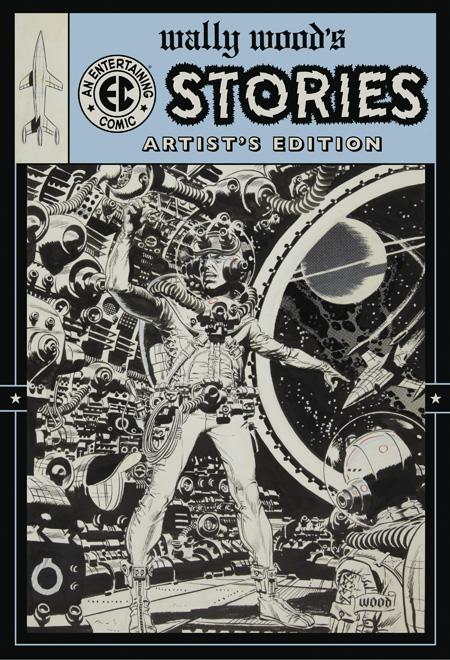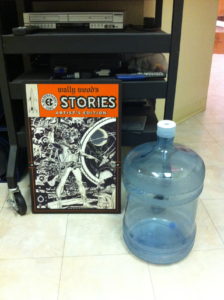Legendary comic-book artist Wallace Wood’s life came to a tragic end with his suicide in 1981, putting a .44 magnum to his temple in a shabby Van Nuys, California, apartment at the age of 54. Wood, who made a name for himself in the 1950s with an astounding body of work for EC Comics on magazines like TALES FROM THE CRYPT, TWO-FISTED TALES, WEIRD SCIENCE, CRIME SUSPENSTORIES and MAD, had struggled both personally and professionally in the final years of his life, battling kidney failure, partial blindness and a lifelong fight with alcoholism, a downward spiral described in some detail in the biography WALLY’S WORLD: THE BRILLIANT LIFE AND TRAGIC DEATH OF WALLY WOOD, THE WORLD’S SECOND-BEST COMIC BOOK ARTIST, written by Steve Starger and J. David Spurlock.
Starger and Spurlock do a fine job of taking us behind the scenes of Wood’s life, following the lineage of his parents and attempting to explain psychologically the causes for some of the fears and neuroses that would shadow Wood throughout his life, tracing his perfectionism and bristling at authority figures to a distant, disapproving father. Wood’s three failed marriages are also explored, as well as his lifelong relationship with his first wife Tatjana (a name which may sound familiar to you ’70s comics fans, as she did a great deal of coloring work for DC back in the day).
Lavishly illustrated with plenty of examples of Wood’s work for everyone from EC to Marvel to DC, the book ultimately somewhat fails to satisfy. Part of the problem is the authors’ curious decision early on to go off on a lengthy tangent about Scandinavian mythology, followed by an even longer discussion about Wood’s grandparents, which while interesting enough in laying the groundwork for Wood’s childhood, holds off the reader even longer from truly feeling they’re getting to know the subject. Also, the book jumps around the chronology of his career quite a bit, with the result that sometimes Wood’s emotional reactions to certain work is described before the work has even been discussed. Wood’s infamous work on the explicitly violent 1962 Topps MARS ATTACKS! trading card set, for example, is alluded to numerous times before it’s ever explained that he did the work. It’s as if the authors expect us to know the highlights of Wood’s career going in, which is never the way you should handle a biography.
The biggest problem, though, is the amazingly shoddy editing. We’re not just talking about typos, either. There are dangling sentence fragments, missing and repeated words, and unfinished sentences throughout. There really is a lot to recommend in this book, new insights into Wood, his work and the comic-book industry of the 1950s, a period not as frequently focused on as the Golden Age of the ’40s or the Silver Age ’60s. It’s a shame that the many typographical errors so often take the reader out of the moment. Hopefully a second edition will see these errors corrected. For all its faults, WALLY’S WORLD is likely the most thorough examination of Wally Wood’s life and work that we’re going to get, and he deserves better than this.
Luckily, a much more fitting tribute to the amazing work of Wally Wood has just been released from IDW Publishing: WALLY WOOD’S EC STORIES ARTIST’S EDITION.
The IDW ARTIST’S EDITIONS are a marvelous innovation from IDW Editor Scott Dunbier, in which the original comics artwork from some of comics’ greatest artists is reproduced not ony in high-resolution but at the full size of the originals, allowing the reader to admire the original work as it appeared on the artist’s drawing board: every brush stroke, every eraser mark. What makes this edition particularly mind-blowing is the fact that Wood worked on a larger sheet of paper, resulting in the book coming in at a staggering 15″ x 22″. Can’t get your head around it? Take a look at the pic below for comparison:
It’s a marvelous book, and a proper tribute to one of the best comics artists to ever put ink to paper. Now you just need to find a bookshelf big enough for it…




Comments are closed.